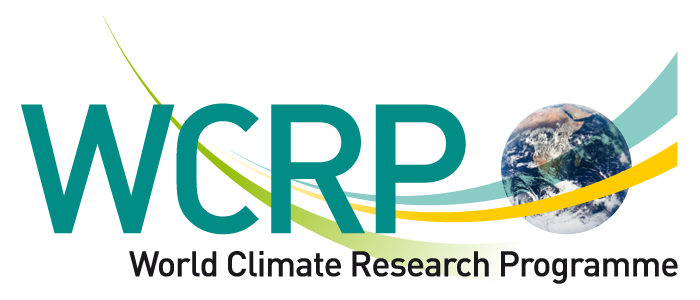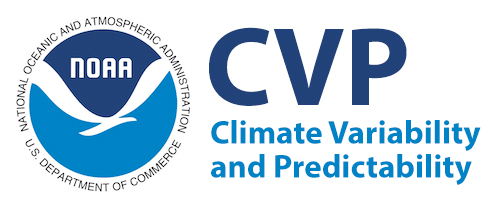Second International Conference on Subseasonal to Seasonal Prediction (S2S) and
Second International Conference on Seasonal to Decadal Prediction (S2D)
Themes descriptions
- Mechanisms of S2S predictability
This theme welcomes contributions addressing understanding of the sources of predictability on intra-seasonal time scales (e.g., MJO, stratosphere, land surface/ocean/cryosphere coupling, scale interactions, teleconnections between the Tropics and extratropics...). It also welcomes contributions on how high-impact weather event attribution can improve S2S forecasts, as well as the use of statistical, theoretical and low-order models. - Modelling issues in S2S prediction
This theme welcomes contributions addressing the design of S2S forecasting systems. This includes the design of data assimilation systems and the forecasting system (initialization, ensemble generation, ensemble size, resolution, complexity of the earth system needed for S2S forecasts..), as well as studies of systematic errors and process-based diagnostics and metrics. - S2S ensemble predictions and forecast information
This theme welcomes contributions addressing the development of methodologies for calibration, multi-model combination, statistical models, evaluation of the skill of S2S forecasting systems and development of S2S probabilistic forecast products, including for operations. Contributions on extreme event prediction and verification are particularly welcome. - S2S forecasts for decision making
This theme welcomes contributions in the broad area of socio-economic applications of S2S forecasts to meet decision-making needs (eg early warning-early action, risk management), such as in agriculture and food security, water resource management, public health, energy, and disaster risk reduction... Contributions related to developing country needs, private sector forecasts, and statistical/dynamical downscaling for sectorial models (eg crop and hydrologic model) are encouraged. - Land initialization and processes
This theme welcomes contributions on needs for future analysis, modeling and prediction skill studies concerning S2S predictability arising from land processes and variability. - Ocean initialization and processes
This theme welcomes contributions on needs for future analysis, modeling and prediction skill studies concerning S2S predictability arising from ocean processes and variability. - Aerosols
This theme welcomes contributions on needs for future analysis, modeling and prediction skill studies concerning S2S predictability arising from aerosol processes and variability - Stratosphere
This theme welcomes contributions on needs for future analysis, modeling and prediction skill studies concerning S2S predictability arising from stratosphere processes and variability.
B) S2D segment
The S2D timescales concern predictions of seasonal or longer-term (up to decadal) averages and / or forecast ranges beyond the first season. Themes 1–4 of the S2D segment are very much aligned to the themes of the S2S segment but are specific to the seasonal and longer time scale. Themes 5–6 seek contributions addressing initialization, skill assessment and new developments in predicting the Earth System respectively.
- Mechanisms of S2D predictability
This theme welcomes contributions addressing understanding of the sources and physical processes giving rise to predictability on S2D time scales (e.g. modes of variability, including ENSO, NAO, AMV, PDO, and associated teleconnections, as well as natural and anthropogenic radiative forcings). It also welcomes contributions on how particular regions and earth system components contribute to predictability. - Modelling issues in S2D prediction
This theme welcomes contributions addressing the design of S2D forecasting systems. This includes the design of data assimilation systems and the forecasting system (initialization, ensemble generation, ensemble size, resolution, complexity of the earth system needed for S2D forecasts), as well as studies of systematic errors, model drift, and related process-based diagnostics and metrics. - S2D ensemble predictions and forecast information
This theme welcomes contributions addressing the development and current capability of S2D forecasts, including uncertainties, operational issues, and methodologies for calibration, multi-model combination and statistical models. Areas of particular interest include extreme event prediction, as well as near-real time decadal prediction and associated forecast information, including from the Decadal Climate Prediction Project. - S2D forecasts for decision making
This theme welcomes contributions in the broad area of socio-economic application of S2D forecasts to meet decision-making needs (e.g. early warning-early action, risk management), including agriculture and food security, water and living marine resource management, public health, energy, and disaster risk reduction. Contributions related to developing country needs, private sector forecasts, and statistical/dynamical downscaling for sectorial models (e.g. crop and hydrologic models) are encouraged. - Hindcast and forecast quality assessment
Contributions are sought on innovative verification methods for hindcasts and real time forecasts, new observational datasets for verification, dependence of forecast quality metrics on the quality of verifying observations, and uncertainties in forecast evaluation. Contributions assessing the impact of initialisation, and investigating relationships between potential predictability and actual skill of S2D forecasts, are also encouraged. - Frontiers in earth system prediction
This theme welcomes contributions addressing S2D prediction of a wider range of earth system variables than are typically forecast operationally, including land, ocean, and cryospheric variables, as well as risks of weather and climate extremes. Contributions on the predictability and prediction of carbon fluxes and biogeochemical cycles are also sought, and initial results from the Decadal Climate Prediction Project are especially welcomed.
C) Joint session between S2S and S2D
The S2S and S2D communities share very similar scientific and technical challenges in many areas. These common challenges include forecast initialization and ensemble generation; initialization shock and drift; understanding the onset of model systematic errors; bias correction, calibration, and skill assessment; model resolution; atmosphere-ocean coupling; linking research, operations, and users; and time scale interactions. The joint session is, thus, intended to address such common topics and issues and welcomes contribution demonstrating progress and addressing challenges across the whole spectrum of time scales.
- Initialization, initialization shock and model error (includes data assimilation)
This theme welcomes contributions on evaluating and addressing model systematic and initialization errors in the Earth system components which are particularly relevant to sub-seasonal to decadal time scales. Contributions on data assimilation, including ocean-atmosphere coupled data assimilation, and effects of model resolution and atmosphere-ocean coupling are also welcome. - Research to operation (includes seamless prediction)
This theme welcomes contributions on testing and developing techniques for calibration, combination, generation, and verification of sub-seasonal to decadal forecast products, with a special emphasis on seamless predictions from weeks to decades. - Time scale interaction (includes teleconnections)
This theme welcomes contributions on the interactions between sub-seasonal, seasonal and decadal variabilities (for example, low frequency modulation of sub-seasonal and seasonal sources of predictability). Contributions on teleconnections between the tropics, mid- and high latitudes at the sub-seasonal to decadal time scales, and how they may vary in time, are also welcome.










